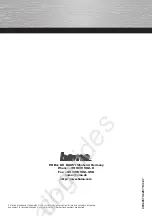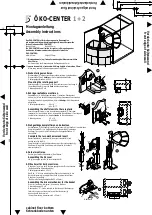
15
3. Inspect the blades, especially the curved area (Fig. 18).
If you notice any damage, wear, or a slot forming in this
area (Fig. 18), immediately install a new blade.
m–151
1
2
3
Figure 18
1.
Cutting edge
2.
Curved area
3.
Wear/slot forming
Removing the Blades
Important
There are two different sizes of blades. The
shorter blade goes into the center spindle. The two longer
blades go on the outside spindles (Fig. 22).
1. Remove the mower; refer to Removing the Mower;
page 17.
2. Carefully tip the mower over.
3. Remove the nut, flat washer, blade, and washer
(Fig. 19). A block of wood may be wedged between the
blade and the mower to lock the blade when you are
removing the bolt.
4. Inspect all parts. If a defect or damage is noticed, install
new parts.
1
2
3
4
5
m–5711
Figure 19
1.
Nut
2.
Flat washer
3.
Outside blade shown
4.
Washer
5.
Spindle
Sharpening the Blades
1. Use a file to sharpen the cutting edge at both ends of the
blade (Fig. 20). Maintain the original angle. The blade
retains its balance if the same amount of material is
removed from both cutting edges.
1
Figure 20
1.
Sharpen at original
angle
2. Check the balance of the blade by putting it on a blade
balancer (Fig. 21). If the blade stays in a horizontal
position, the blade is balanced and can be used. If the
blade is not balanced, file some metal off the back side
of the blade. Repeat this procedure until the blade is
balanced.
1
2
Figure 21
1.
Blade
2.
Balancer
Installing the Blades
Important
There are two different sizes and shapes of
blades. The shorter blade goes into the center spindle. The
two longer blades go on the outside spindles (Fig. 23). See
figure 22 for the shape difference.
2
1
3
m–5707
Figure 22
1.
Outside blade
2.
Center blade
3.
Angle on sail of blade






































